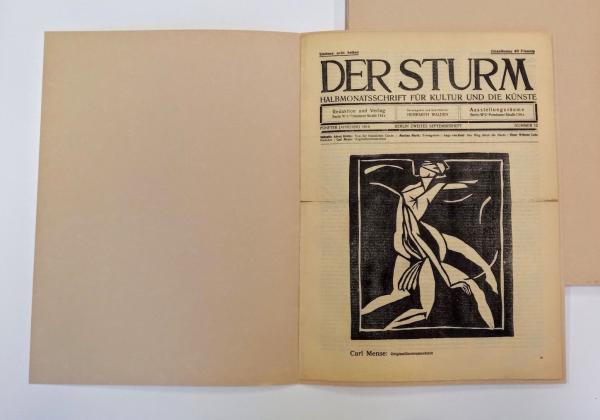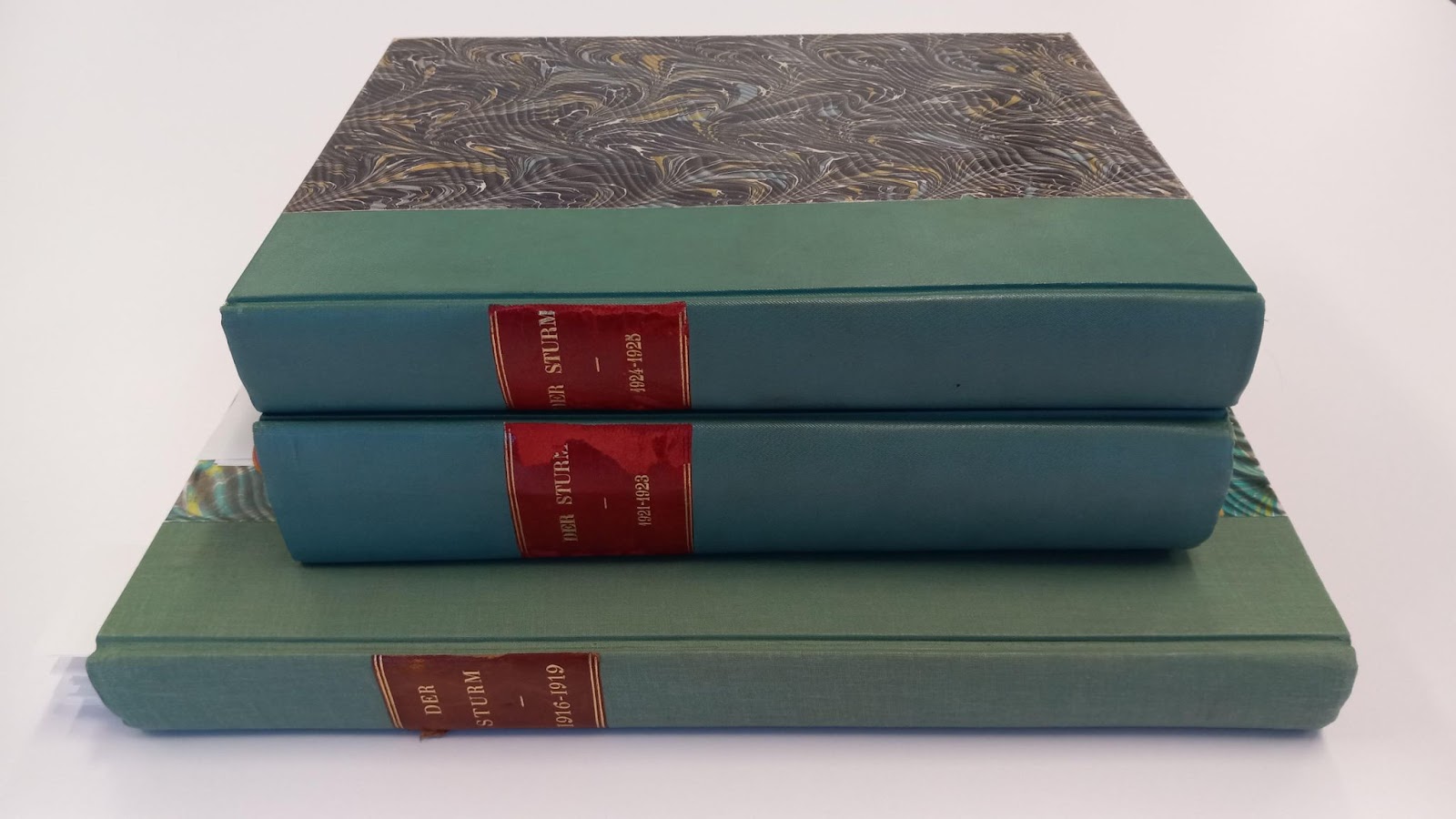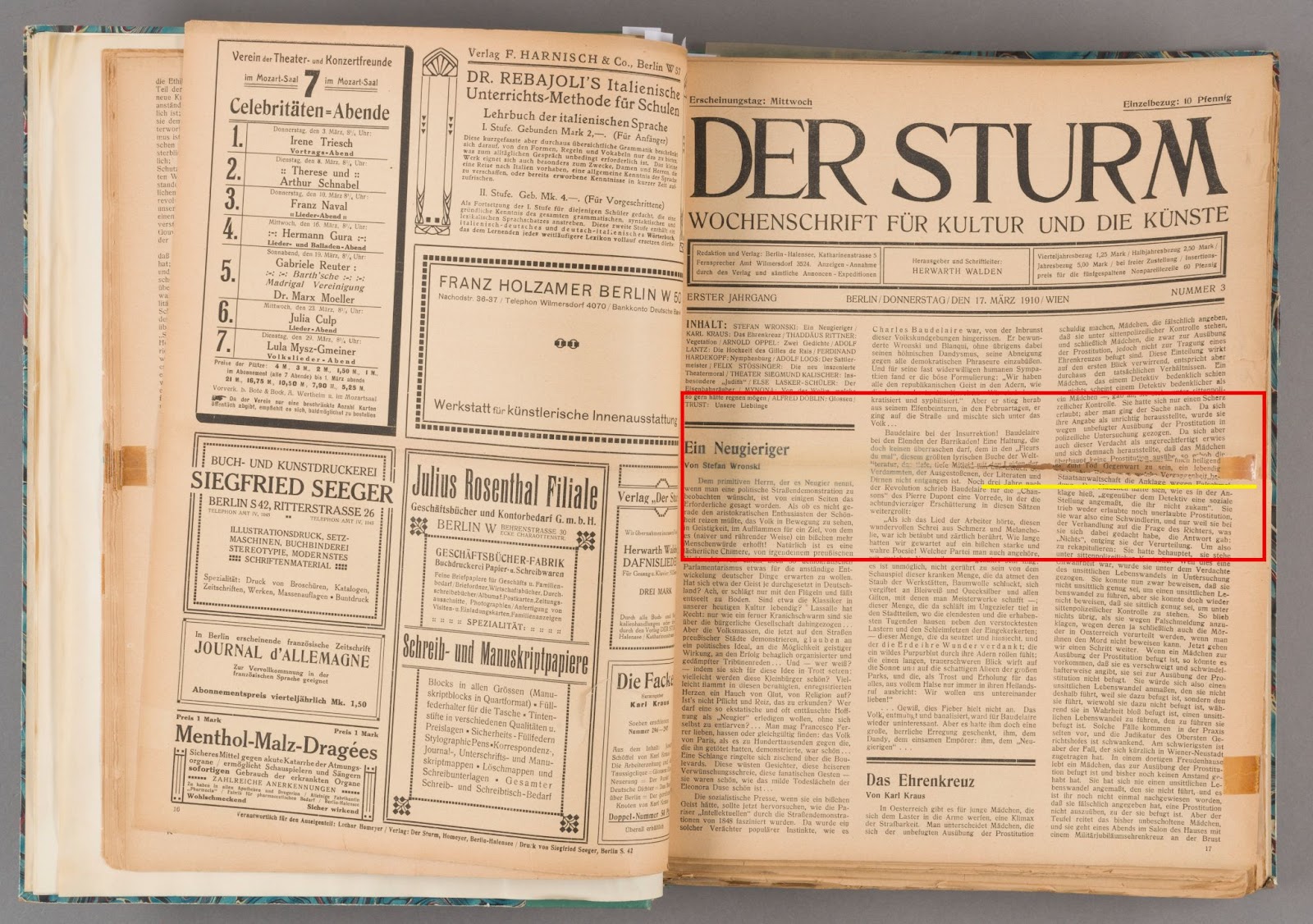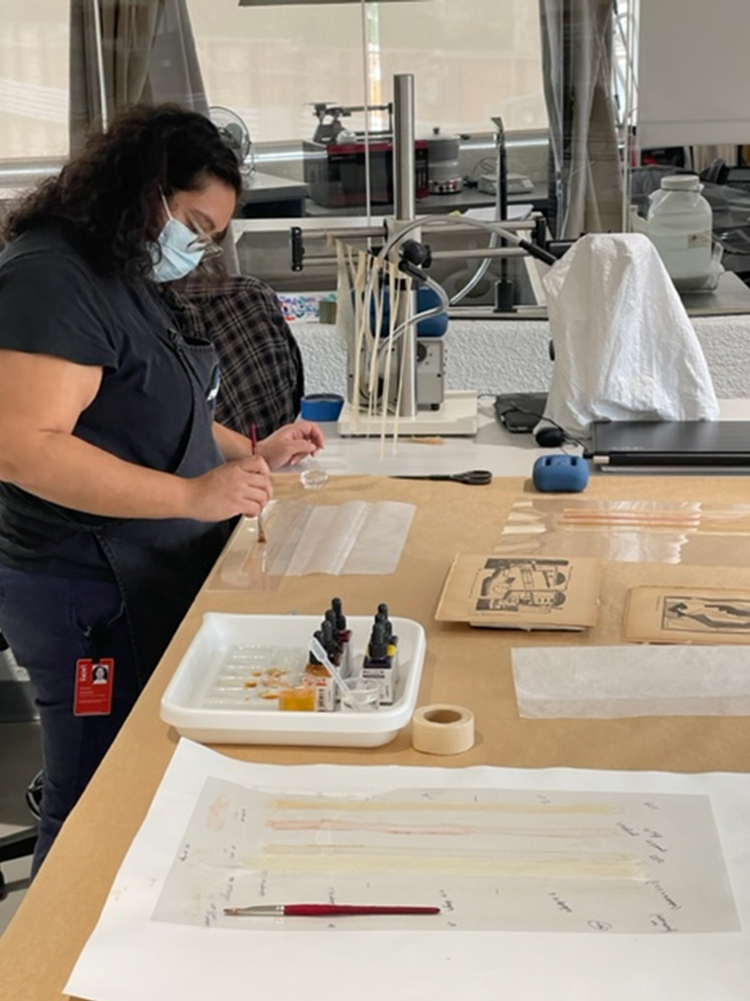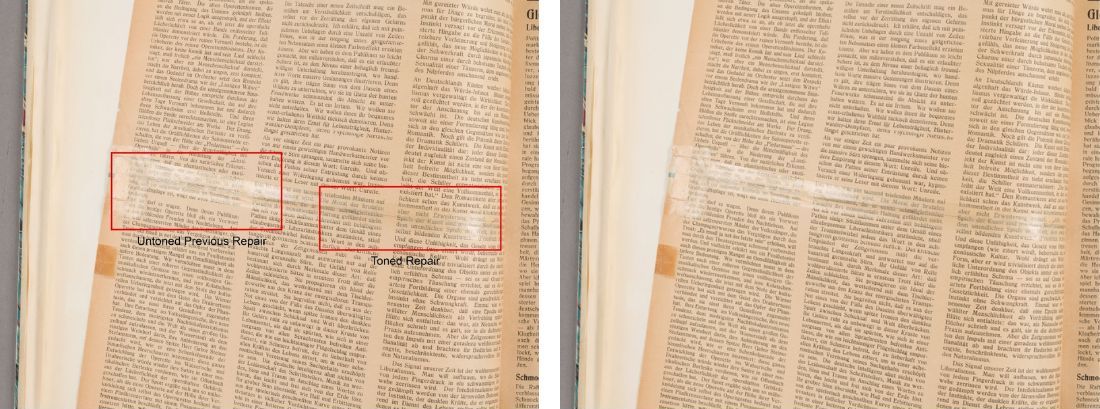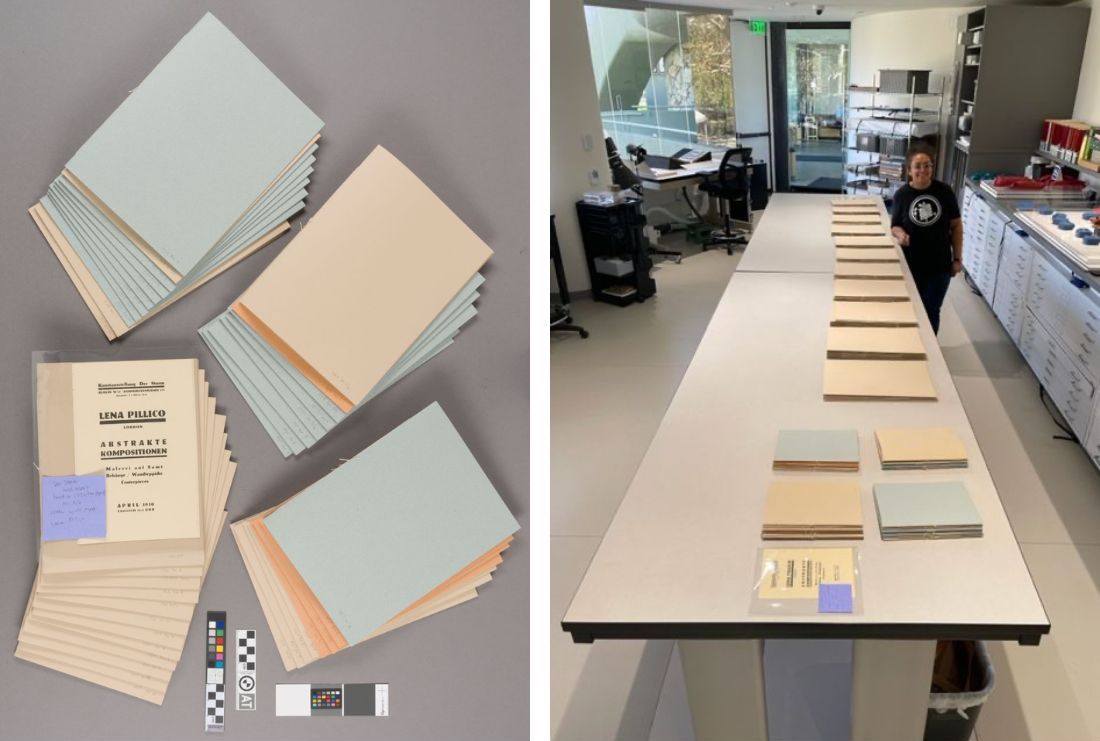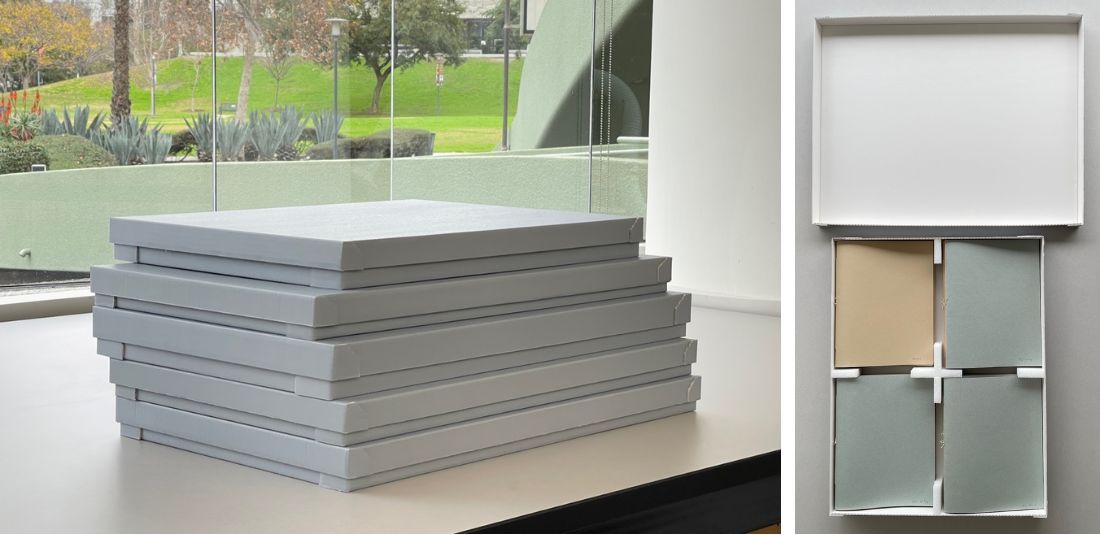By the early 20th century, advances in printing and a burgeoning readership led to a plethora of newly published newspapers and magazines in Berlin. The city attracted artists and writers, many of whom contributed their works to art and literary magazines. One of the most influential and long-lived of these magazines was Der Sturm (The Storm). Founded by the German impresario Herwarth Walden, the publication was the center of a constellation of endeavors also branded “Der Sturm” which included a gallery, bookstore, and theater. Der Sturm became a radiating hub for artistic exchange as Walden invited artists, poets, playwrights, and philosophers to share their ideas and works in its pages. Many issues had covers and interior pages featuring original prints by modernist artists, including members of Die Brücke (The Bridge), who sought to revive the woodcut as an art form and found the printed page to be an especially apt vehicle.
The collection of Der Sturm issues in the Rifkind Center for German Expressionist Studies spans the entire 21 years of its publication from 1910 to 1932. When the magazine was acquired by Robert Gore Rifkind, the individual pamphlets had been combined by a previous owner into large, hard-cover volumes, with as many as 134 issues bound together in a single book.
Like many periodicals of the early 20th century, Der Sturm was printed on weak paper that has degraded and become extremely brittle over time. Rifkind Center curator Erin Maynes sought the expertise of the Paper Conservation team in order to protect and stabilize this fragile publication for continued study and display into the future. Under the care of Nicole Alvarado, Mellon Fellow in Paper Conservation, the library-bound volumes of Der Sturm were disbound to stabilize them and return them as much as possible to their original form. Nicole shares the details of her process and techniques below.
In discussion with the curator, the decision was made to disbind these books and rehouse the individual magazines by pamphlet-stitching them with linen thread into lightweight paper covers.
The main goals for this project were to stabilize the pamphlets and reduce unnecessary handling of the fragile paper. As individual pamphlets, only the issues chosen for a particular exhibition need to be prepared for display.
It was important to disbind these books because, within them, pamphlets of varying sizes were bound together. The protruding edges of the longer pamphlets and the brittle condition of the poor quality wood pulp paper resulted in extensive mechanical damage. The edges of the pamphlets were easily torn, fractured, or bent, resulting in fragmentary losses. Just turning the pages caused breaks and tears throughout the text block.
The entire process involved the following steps:
Disbinding
The first step in disbinding is to remove the pamphlets from their hardcover binding. Once the book’s cover is removed the sewn structure is revealed. Three of the four books treated were sewn on tapes and backed with a water-soluble adhesive (hide or fish glue). The fourth book was sewn on recessed cords, but the adhesive used on the spine was a PVA, polyvinyl acetate adhesive. This adhesive only softens in water and is extremely difficult to remove.

Removing Adhesive from the Spine of the Textblock
This process requires the application of paste to the spine while the book is being supported in a lying press. Once the adhesive is softened it can be carefully removed using a teflon spatula.
Separating Individual Pamphlets
Once the adhesive on the spine has been removed the textblock is laid flat on the table so each single signature pamphlet can be separated. At this time remnants of the linen sewing thread and old residual adhesive can also be removed.
Final Cleaning of Residual Adhesive and Guarding
Next the residual dry adhesive is removed from the folded edge of the pamphlet with a small delrin spatula. Once this is completed, the pamphlet can be repaired. The first step is referred to as guarding. Guarding reinforces the spine fold by attaching a thin strip of toned Japanese paper using wheat starch paste. This stabilizes the pamphlet in preparation for sewing it into its new paper cover.
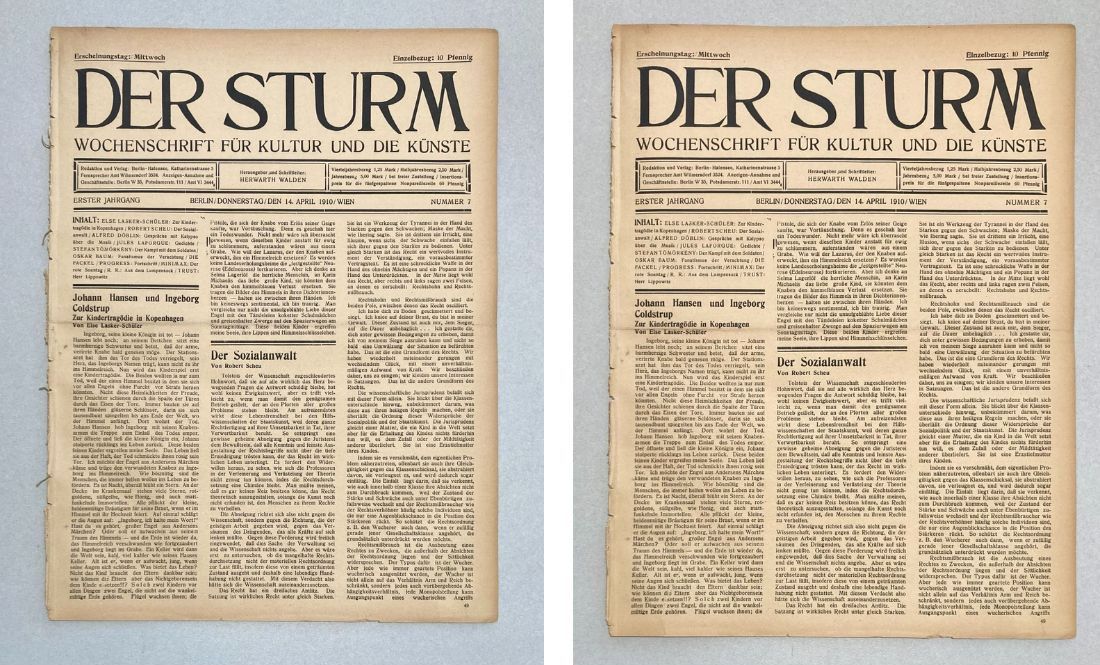
Mending of Tears, Breaks, and Losses
The extremely brittle wood pulp paper is easily damaged with handling. Simply turning the pages can cause breaks and tears. This type of mechanical damage was exacerbated because so many brittle pamphlets had been bound together in a single large library style book. Every time you wanted a particular issue it was necessary to flip through hundreds of pages causing additional breaks or tears.
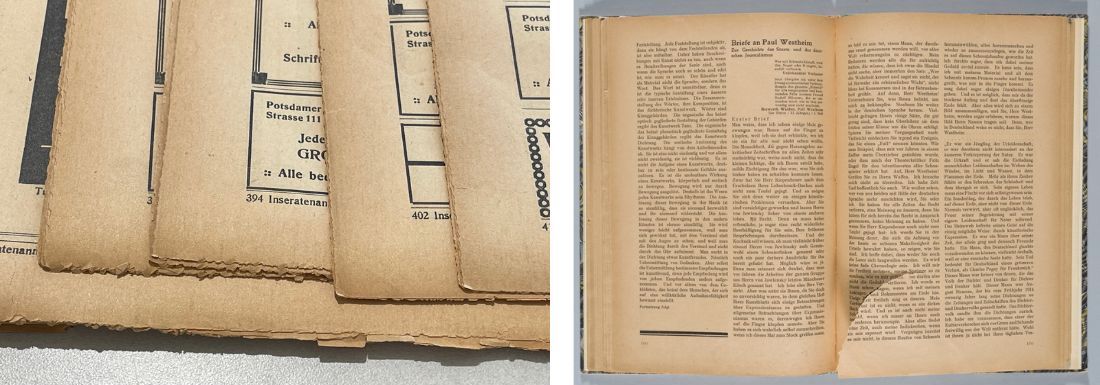
Some issues included advertising inserts or other ephemera that were attached using spots of adhesive. These inserts were often on heavier paper that could damage adjacent pages when removed.
The pamphlets often included additional original prints. These artworks were tipped onto the text, meaning the sheet was pasted to an adjacent page rather than bound together with the rest of the issue. The stiffness of the adhesive attachment also created a breaking edge resulting in tears.
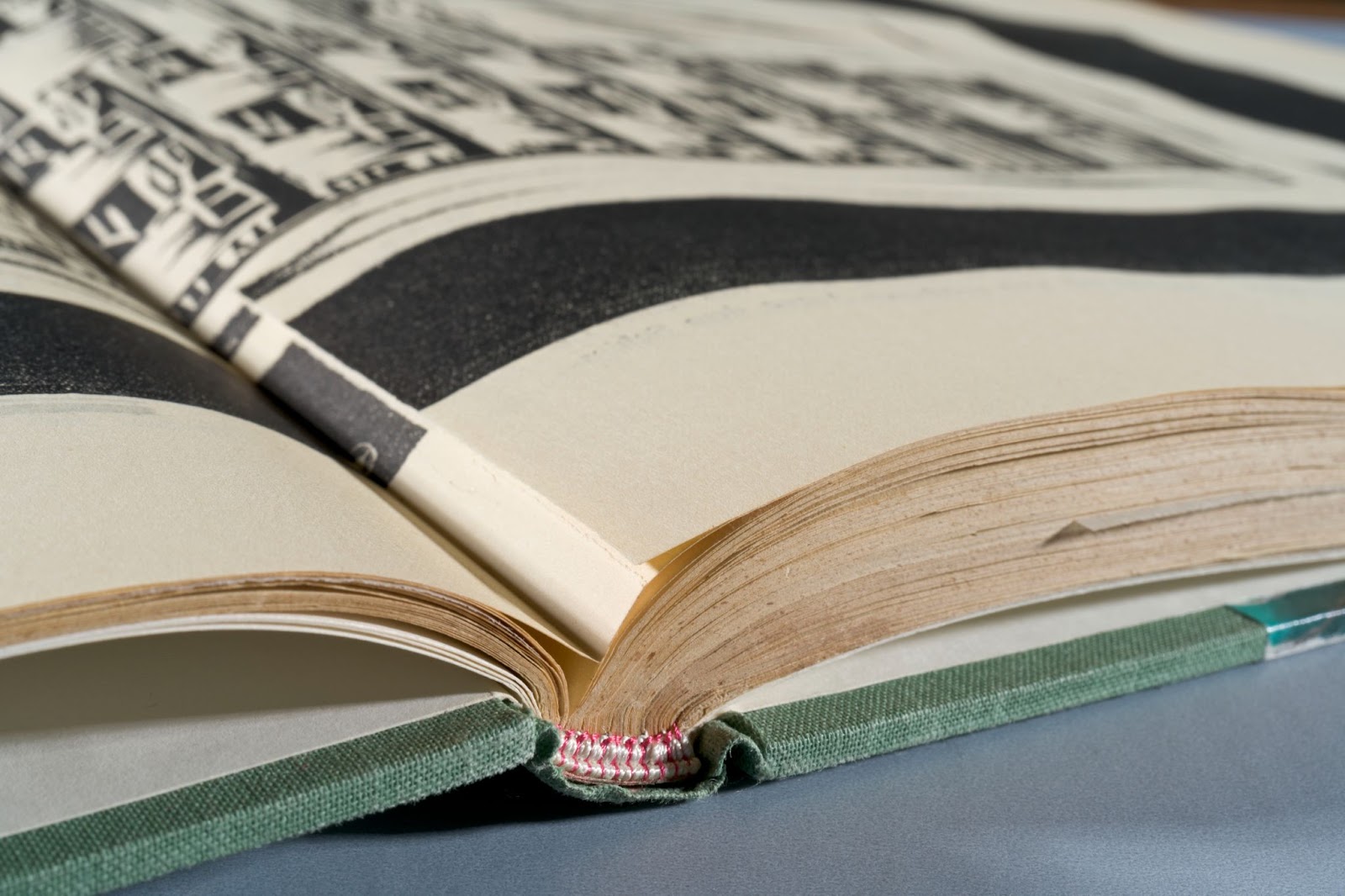
For ease of distribution or general use, the pamphlets were folded in half. Over time, these folds weakened resulting in horizontal tears along those folds.
It was necessary to tone mending paper for repairing the text pages and matching the colored covers. A thin Tengujo was toned using Aero Color Professional acrylic ink. It is a permanent color that will not fade with time. It is also non-water soluble, so is not affected by using a wet adhesive (starch paste) to adhere the mends to the pamphlets or their covers.
Various types of tape had been used to make repairs over time. These included pressure sensitive adhesive tape and Filmoplast P repair tape. These tapes discolor and embrittle the paper permanently and cannot be easily removed. The damage to the paper is irreversible.
Because of these poor quality repairs, the tipped-on inserts and the sheer number of pages it was not possible to bathe the pamphlets to improve their visual appearance. Lightweight Japanese paper was therefore toned to match the existing color of the aged wood pulp paper. Below, on on the left is an example of an untoned mend and, on the right, a toned repair.
Sewing Pamphlets Into New Paper Covers
Once the pamphlets were stabilized, they were sewn into pamphlet covers and rehoused in corrugated storage boxes. The larger pamphlets were sewn into a slightly more rigid paper or map folder stock covers to provide better structural support for the fragile paper.
Issues from 1925–30 featured title pages printed on paper of various colors, which meant we needed to find paper covers in colors that were sympathetic to the original paper cover.
Rehousing Pamphlets in Custom Clamshell Boxes
Thank you, Nicole! The Rifkind Center for German Expressionist Studies holds original issues of Der Sturm, as well as a complete run in reprint and digitized formats. This and other publications related to German Expressionism may be viewed in the Rifkind Center by appointment. Please email rifkind@lacma.org for more information.
Selections from the Rifkind Center’s permanent collection are continuously on view in rotating themed installations. You can visit the current installation, Reexamining the Grotesque: Selections from the Robert Gore Rifkind Collection, on view in the Rifkind Gallery in the Modern Art Galleries in BCAM, Level 3, through March 5, 2023.



